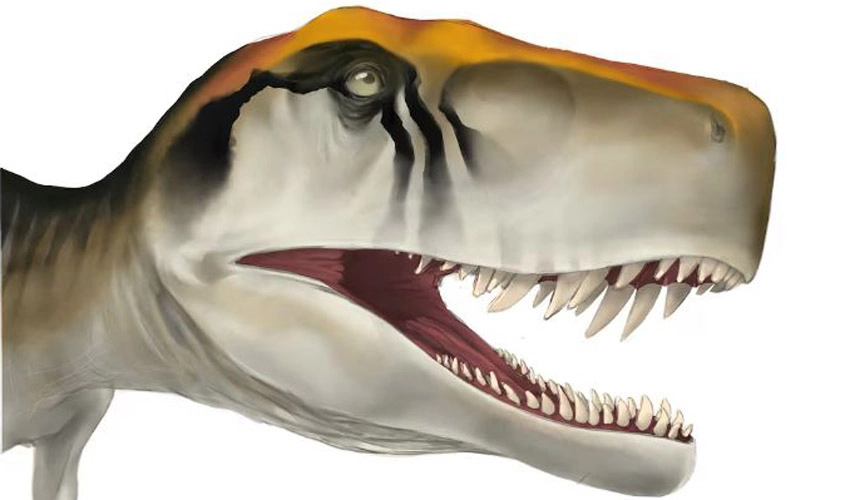”
WASHINGTON (Reuters) – One of the traits that helped make the dinosaurs such an evolutionary success story – thriving for 165 million years – was their fast growth rate, from massive meat-eaters like Tyrannosaurus to immense plant-eaters like Argentinosaurus.
But when did this characteristic first appear? A new study indicates it was present in the earliest dinosaurs, as revealed by microscopic features in bone fossils from Argentina that showed that they exhibited growth rates on par with those of today’s mammals and birds.
“Growing quickly allows organisms to escape the risky business of being small for a long part of their life history. It also allows them more time to reproduce throughout their lifespan, which imparts a measure of evolutionary fitness, generation by generation,” said paleontologist Kristi Curry Rogers of Macalester College in Minnesota, lead author of the study published this month in the journal PLOS ONE, opens new tab.
The researchers examined patterns preserved within the bones of dinosaurs and some of their cousins that inhabited northwestern Argentina between about 231 and 229 million years ago.
“The organization of minute bone mineral crystals and proteins, along with blood vessels and cellular organization, all reflect relative speed of growth,” Curry Rogers said. “Of course, all these soft squishy parts have long since decayed, millions of years ago, when these bones were becoming fossils. But all the hard parts that persist through time record the spaces where these soft parts once were. This allows us to reconstruct and compare growth patterns among animals.”
The researchers studied five early dinosaurs – all bipedal, fleet-footed, and with clawed, grasping hands and sharp teeth.
Three were meat-eaters, forerunners of massive predators such as T. rex and Giganotosaurus. Herrerasaurus and Sanjuansaurus were around 10-15 feet (3-4.5 meters) long, while Eodromaeus was about the size of a turkey.
The other two – similarly turkey-sized Eoraptor and Chromogisaurus – were forerunners of long-necked, four-legged giants such as Argentinosaurus and Dreadnoughtus.
All five showed signs of exceptionally fast growth.
But the researchers also got a bit of a surprise when they discovered that some of the non-dinosaur reptiles in these ancient Argentine ecosystems were keeping pace, having their own speedy growth rates.
“Dinosaurs arose from humble origins, starting off as small, bipedal carnivores, who were themselves dominated by a diverse array of other ruling reptiles,” Curry Rogers said.
Quick growth was detected in fearsome four-legged crocodile-like Saurosuchus, the dominant terrestrial predator of its time at about 23 feet (7 meters) long, as well as crocodile relatives Proterochampsa and Trialestes.
Other animals including tusked plant-eating reptile Hyperodapedon and mammal-like reptile Exaeretodon also grew quickly, but regularly paused their growth throughout life – a pattern distinctive from the continuous fast growth of dinosaurs.
The first dinosaurs and these other animals evolved during the Triassic Period. This was in the aftermath of Earth’s worst mass extinction 252 million years ago at the end of the Permian Period. About 95% of species were lost amid severe climate change apparently caused by massive Siberian volcanic activity.
“Since these dinosaurs shared their fast growth rates with a number of other animals that are distant relatives, it seems that growing fast was good for everyone in a turbulent world,” Curry Rogers said. “Fast growth, combined with so many other unique aspects of dinosaur physiology, biology and behavior likely gave dinosaurs a leg up. But it was this unique combination – not the single feature of growing up quickly – that gave dinosaurs their evolutionary jump start.”
Another mass extinction at the end of the Triassic about 201 million years ago doomed many of the early competitors to the dinosaurs, allowing the dinosaurs to assert true dominance.
“As time would continue to unroll, the dinosaurs would hold onto these elevated growth rates, while their non-dinosaur compatriots would slow things down,” Curry Rogers said. “These changes accompany major shifts in diversity through this time. As dinosaurs become more disparate, their crocodile-cousins get canalized into a much narrower range of growth patterns and lifestyle.”
”






